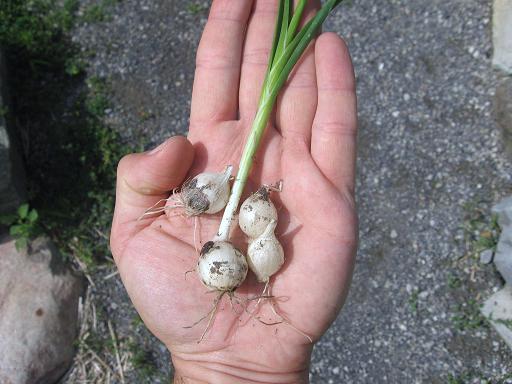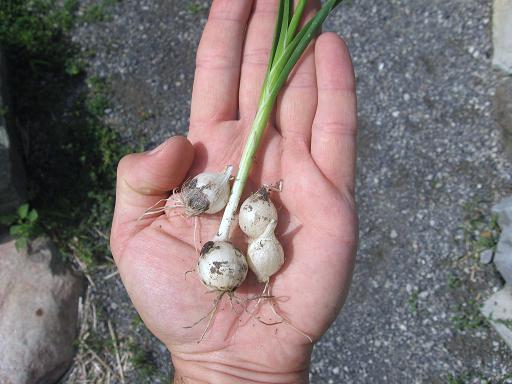Meadow Garlic - Allium canadense
Meadow Garlic - Allium canadense
Couldn't load pickup availability
Allium canadense, or Meadow Garlic, is one of the numerous wild alliums, and, in our experience, one the most useful and easy to cultivate. Like many alliums, the plant produces edible leaves and bulbs, as well as top-setting bulbils. Its flavour is somewhere between onion and garlic, and its common name includes variants of both, like many of its relatives (wild onion, wild garlic, etc.). Much easier to please than allium tricoccum (a.k.a. ramps, which we also sell), it is also more versatile but lacks the delicate softness of its woodland cousin.
Cultivation: Full sun, light soil (clay is ok, but like most bulbs and tubers, heavy soils make harvest more difficult). Propagates quickly once established, by bulb division and especially by its many bulbils (themselves edible). May even become weedy (and is, in fact, troublesome to agriculture, since it may impart onion flavour to grains). Plant accordingly (i.e. not too close to daintier neighbours).
Food preparation: The small bulbs (about the size of a pearl onion), can be prepared in the same way as regular onions, although their size makes them easier to include whole in broths, soups, etc. The grass-like leaves can be used in much the same way as chives (this part of the plant actually looks and tastes very much like garlic chives). 🧄
Ethnobotany: A widely used plant in its growing area, it is still cultivated by gardeners and collected by foragers. Ojibwe and Cherokee tribes used the plant for food and medicine (Erichsen-Brown, 2013:454; Small, 2013). A common use was as a flavouring for soups and meats. 🍲
References:
Erichsen-Brown, Charlotte. 2013. Medicinal and Other Uses of North American Plants: A Historical Survey with Special Reference to the Eastern Indian Tribes. Courier Dover Publications.
Small, Ernest. 2013. North American Cornucopia: Top 100 Indigenous Food Plants. CRC Press, 2013.
Share


